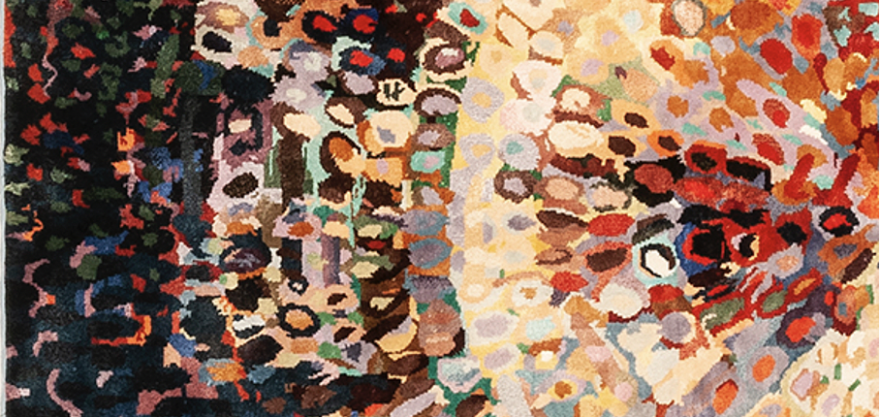Activity Guide by Kate Kwasneski
Intern, Grinnell College Museum of Art
Look
Not all art is what it seems to be when you first look at it. Art can often be complicated and have multiple meanings and layers. Usually, the part of art that is complicated is the meaning of the things depicted in the artwork: its subjects and symbols. However, sometimes even the medium of art can be more complicated than it seems. Medium refers to the kind of art that a piece is — whether it is a painting, a drawing, or a sculpture — as well as what the art is made out of, like wood or clay. Other mediums include photography, pastels, prints, ceramic — and countless other examples. Today, we will be looking at art that falls into this category: art that looks like one medium that is actually a different medium.
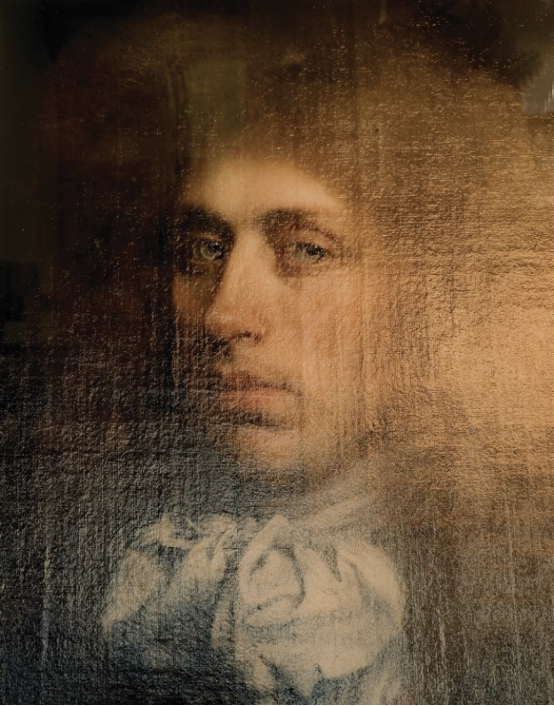
At first glance, this seems to be a painting. On looking closer, you can see that it is a photograph of a painting! The bright light reflected on the right side of the painting was a purposeful choice made by the photographer. He is less concerned with the man depicted in the painting; instead, he is trying to get the viewer to think about the light that is hitting the painting. Look at the reflection on the surface, the bright light covering the right side of the photo. What do you think about this use of light? What statement could the artist be trying to make with this photo?
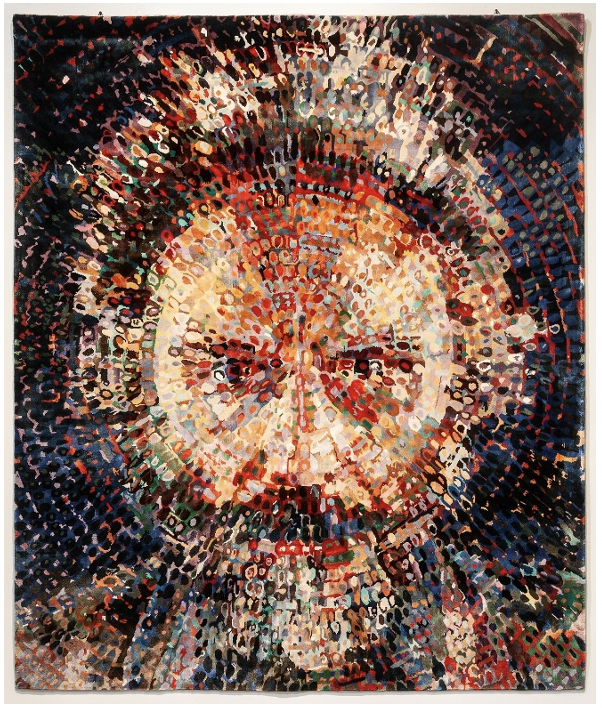
This image looks like an abstract person. Maybe someone used a looser brushstroke, like the Impressionists, to paint this man. From a distance, it is hard to differentiate the shapes. If you zoom in closer, you notice that it is actually a rug!
Here is a close up of part of the rug. It is much easier to see, this zoomed in, that it is made of fabric. In fact, if you zoomed in far enough, it would be difficult to tell that there was a face in this rug at all! This rug is based on an earlier painting by the artist, which he translated from paint to fabric. He creates his artworks by dividing the canvas into a grid of small squares and turning each part of a person’s face into abstract shapes. Have you seen other rugs or fabric pieces that could be considered art? What do you think about the artist’s technique of using small shapes to make up a face?
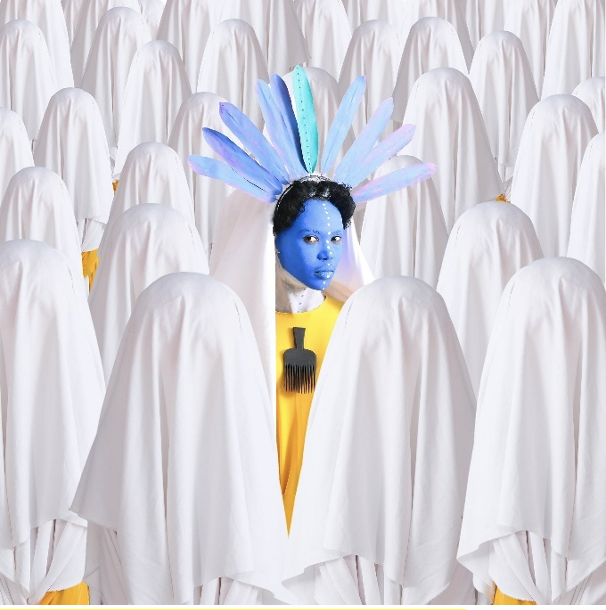
This image looks like it is a painting, but when you look closer, you can see that it is actually a photograph. Muluneh has made everything look unreal and dreamy, flat and colorful. Think about the way the colors contribute to making this image look drawn rather than photographed. What do you think about all the sheets repeating all over the image? What do you think the title, I in the Other, means?
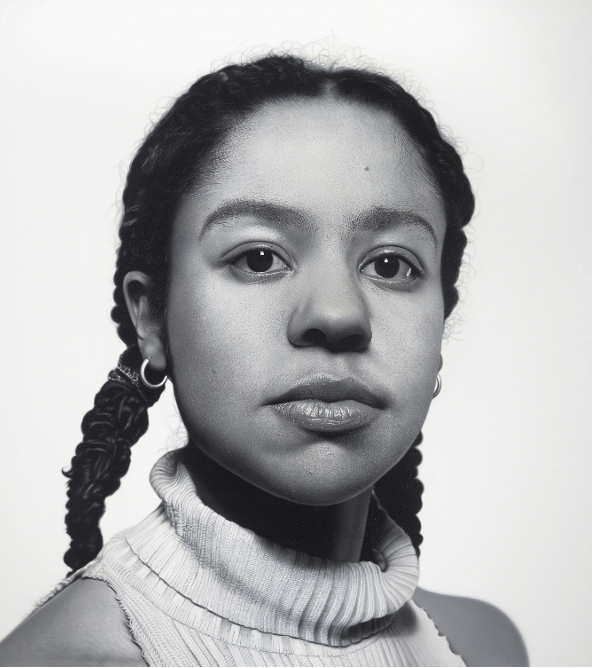
The portrait you see here is incredibly realistic. It almost looks as if you can reach out and touch the woman in the photo! This piece is the opposite of the last one we looked at: it is an oil painting that appears to be a photo! Can you tell that it is a painting? If so, what details gave it away? What do you think of this realistic style?
Create
You can try making an artwork that appears to be a different medium than it actually is. To start with, pick an art medium and think about the characteristics that make it unique from other mediums. Below, you can see a drawing of a woodcut that I made next to an actual woodcut. Woodcuts are made by carving away all of the parts of a piece of wood you do not want to hold ink, leaving a negative of your image. Then, you roll ink over the top, and press the wood down on paper to make a print. You can see small areas where wood has collected ink where it was not supposed to. I tried to replicate this by making light lines with my marker. I focused on using thick, black lines and creating the impression that the background had been carved away.
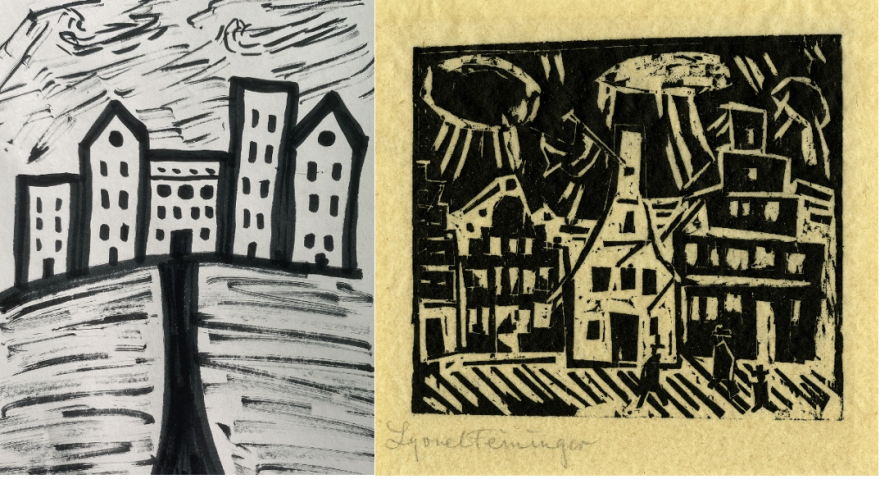
Now it is your turn to try to make art that resembles a different kind of art. Can you make a photograph that looks like a painting? A drawing that looks like a woodcut? A paper collage that looks like it is made out of fabric? Try combining different kinds of art and see what happens! Remember that the little details are usually what makes the difference between something that looks like one art medium versus another, so pay attention and try to be as detailed as possible!
Write
Pick two different art mediums, such as a woodcut and a drawing, or a watercolor and a photograph. Make two lists: one that lists everything the two mediums have in common, and one that lists what makes them different from each other. Try a few different combinations and see which mediums are the most similar, and which are the most different!

